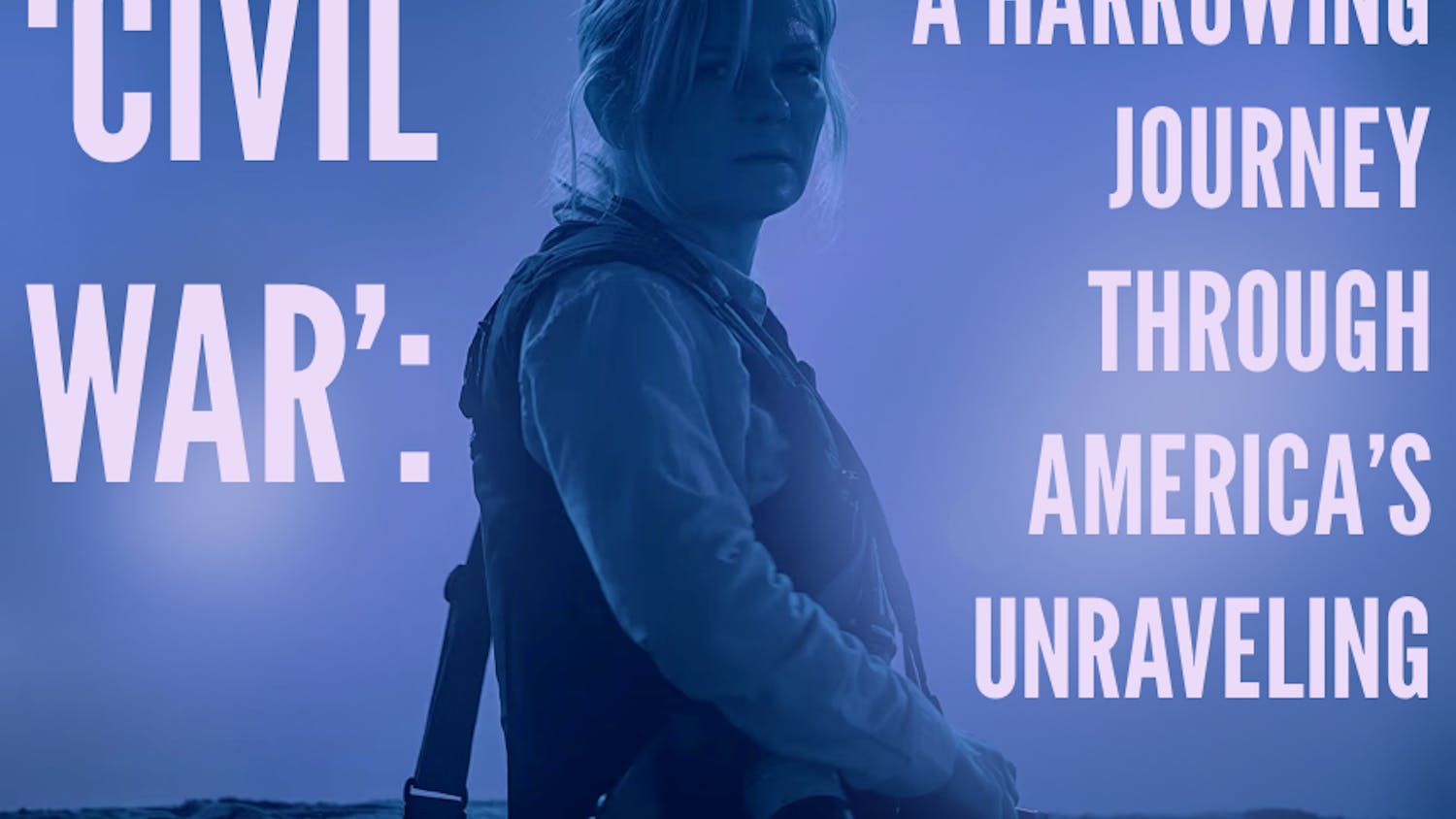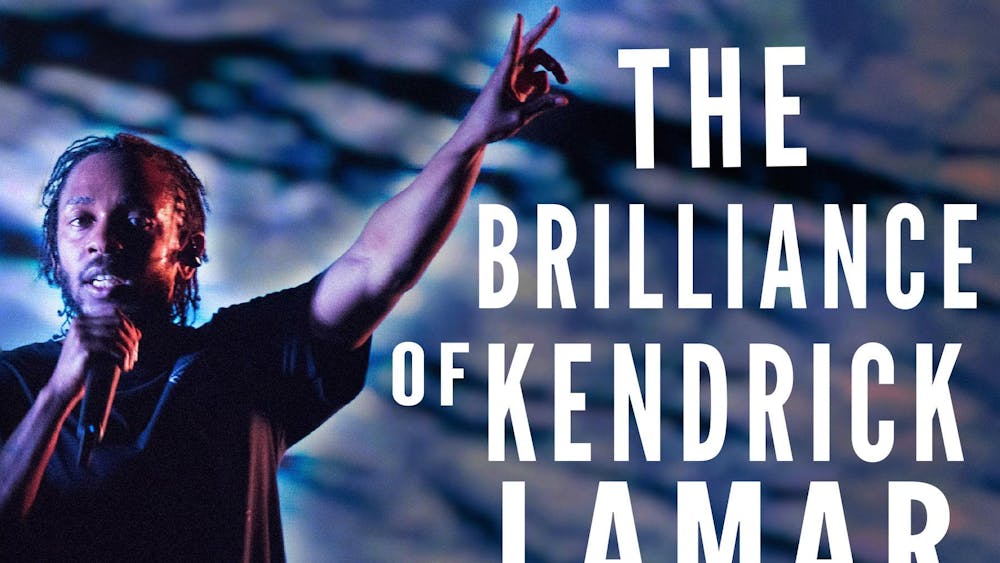
After suffering from the day-to-day terror of looming deadlines, finding your roommate’s dirty underwear on the floor and getting a horrible class registration time, Halloween provides relief: The goblins and ghouls attached to the holiday’s spookiness are pleasantly detached from reality. Today, Scene shares their favorite horror movies that are sure to get the skin crawling in a safe fashion that’s fun for the whole adult family.
Nora McGreevy — ‘The Birds’
Mitch Brenner (played by Rod Taylor) steps gingerly out into the yard from the safety of a house, leading a catatonic Melanie Daniels (played by Tippi Hedren) by the hand. Birds cover the yard, ominous and eerie. A battered, shell-shocked Tippi Hedren steps into the dark night, and under the light of the moon her eyes widen. She lets loose a choked scream — the birds coo and flap threateningly in the dark.
Despite a lack of gore or shocking imagery, the scene as Brenner and Hedren slowly walk to the car is nonetheless terrifying. Alfred Hitchcock’s 1963 production “The Birds” is a masterful juxtaposition of suspense and terror — the quiet shuffling of wings gives way instantaneously to cacophonic screeches and screams, keeping audience members hesitantly on edge. Will the birds attack … this time? Is there any reason for the birds’ violent attacks? Conversely, and perhaps more terrifyingly, is there simply no reason at all? These unanswered questions drive the plot of “The Birds” and lend the film a terrific psychological power.
Wrapped up in the art object itself is the complicated history of its producer. In “The Birds,” Alfred Hitchcock had originally promised to use mechanical birds. He then reneged on that promise, and subjected Tippi Hedren to traumatic attacks from live birds, in addition to wreaking emotional, physical and perhaps sexual abuse on the starlet. The disturbing history of its production adds another dimension of terror to the film itself. Tippi Hedren’s powerful performance mingles acted terror with genuine fear, to the point that the lines between real and manufactured emotion become indistinguishable — making the film all the more chilling to watch.
Adam Ramos — ‘The Babadook’
With the modern developments in special effects, scaring audiences with terrifying visuals and realistic sound-effects is getting easier and easier for horror movie makers. But just ask any Hitchcock or King fan and they’ll tell you that scaring the audience is only half the battle of producing an effective horror movie. Without a solid plot, good acting and successful cinematography, scariness alone doesn’t make for a good horror movie, something that many of the makers of more recent, special-effect-saturated horror movies fail to realize.
Thankfully, in the past five years or so, a handful of horror movies have broken this trend, successfully scaring without sacrificing substance. One of these movies is Australian director Jennifer Kent’s “Babadook.” Exploring the terrorizing effects of mental illness through metaphor, “The Babadook” is just as thought-provoking as it is scary.
After the violent death of her husband, Amelia (played Essie Davis) is tasked with raising her problem-child Samuel (played by Noah Wiseman) all on her own. The horror begins when a bizarre pop-book appears in the small family’s book shelf. Reality fades as the book’s terrifying slenderman-reminiscent baddy steps out of the book’s pages and into the lives of Amelia and her son.
While “The Babadook” may rely on common horror tropes for it’s scares, its poignant representation of the true horror of mental illness makes it anything but a common horror movie.
Kelly McGarry — ‘The Shining’
The classic adaptation of a Stephen King novel is home to iconic scenes including a blood-filled elevator, the phrase “Here’s Johnny” and the popular Halloween costume duo of the ghostly twin girls (“come play with us”). Though the film takes place in a spooky, secluded hotel with a dark history, it’s not the typical haunted-house story.
Stanley Kubrick’s “The Shining” plays out at an ambiguous crossroad between the supernatural and the psychological. Jack (Jack Nicholson), a father with a history of alcoholism and violence, brings his family along to serve as caretaker of the Overlook hotel during its off-season, in hopes to cure his writer’s block. The combination of family tension, work pressures and isolation are a recipe for insanity.
Though there are ghostly scenes, it is unclear whether the haunting is actually present or whether it is in the characters’ imaginations. Whether Jack’s descent into insanity has anything to do with ghosts of the past or his own personal ghosts is up for debate. Whatever the source, Nicholson’s portrayal is bone-chilling, especially over the ominous soundtrack.
Erin McAuliffe — ‘Edward Scissorhands’
I am the worst at watching scary movies. I usually cover my eyes during any suspenseful (read: important) moments. However, I recently watched “Edward Scissorhands” and refused to rest my eyes for longer than a blink as Tim Burton’s idealistic, pastel-hued ’60s suburb-based world engrossed me for an hour and 45 minutes. Johnny Depp is at his prime here — depicting grotesquely lovable Edward, through thick white face paint and minimal dialogue, to evoke extraordinary sympathy.
Winona Ryder starts to enjoy the company of Depp’s dark character, true to her typecast (“Heathers,” “Beetlejuice”). She has carried this dark, paranormal association into most of her roles, including the recent Netflix phenomenon (and choice Halloween costume) “Stranger Things.”
“Edward Scissorhands” proves creepy through Burton’s supreme creation of a detailed, off-kilter but relatable world (see: the never addressed but frequently shown rainbow-tented house being fumigated at the end of the street). The characters (and the brilliant acting that portrays them) bring this world to life in a dynamic drama that doesn’t rely on jarring scares or excessive violence to involve you in spooky suspense.
Mike Donovan — ‘The Ring’
“The Ring”, in many ways, is the horror-movie version of a Brian Eno album — it’s all about the atmosphere. The plot — a souped-up urban legend centered on sinister and deadly videotape — doesn’t have much scare value on its own. Visual mastermind Gore Verbinski, however, transcends the campy narrative with gut-twisting pace changes, visceral (but not gory) imagery and an escalating climate of visual suspense.
Unlike some of its more violent and imposing counterparts, “The Ring” squirms into your mind and eats away at your psyche from the inside. Verbinski embraces the tools of modern filmmaking to create a disturbing atmosphere, but he doesn’t abuse them. His subtle approach to fear and suspense takes Hitchcock’s blueprints and repackages them for the 21st century viewer. At its core, “The Ring” still abides by the old school rules of horror, but Verbinski’s visual flare enhances the quintessential elements of the quality scare flick for a tech-oriented audience.
The film won’t punch you in the gut. It won’t disgust you with aggressive quantities of human innards or bore you with absurdly complex supernatural plot lines. “The Ring,” instead, will leave you with sense of creeping discomfort — the kind that’ll make you think twice before opening a video link and cause you to seriously consider the possibility of ghost children. Verbinski forgoes shock and awe. He, like Hitchcock, relies on our propensity to overthink everything. Verbinski’s cinematic prowess exploits this idiosyncrasy of the human psyche in a novel way, showcasing the storytelling power of contemporary filmmaking without abandoning the core elements of quality, thrilling storytelling.
Jimmy Kemper — ‘Halloween’
Since this movie’s original release back in 1978, few horror films have managed to capture the feelings that made “Halloween” a truly terrifying slasher film. Set in the fictional Midwest town of Haddonfield, Illinois, “Halloween” follows the killing spree of Michael Myers — a massive, lumbering and unfeeling psychopath — as he terrorizes the community on, of course, Halloween night.
“Halloween” exceeded all expectations of what a scary movie could be by taking the horror mold set by Hitchcock’s excellent “Psycho” and stripping each of its elements down to its core, to create maximum primal terror. Take the film’s iconic soundtrack, for instance. John Carpenter simply laid a frantic piano track over a drum machine to induce unprecedented levels of anxiety. No orchestra, no synthesizers, just pure unadulterated fear.
And then, of course, you have the film’s villain, Michael Myers. It’s impossible to sympathize with him; during the audience’s first encounter with him as a child, he murders his sister. On top of that, Myers has no emotions, dialogue or even a face, just a blank, unyielding mask. Yet Carpenter forces viewers to get intimate with this purely evil being by setting several of the scenes from Myers’ point of the view.
Carpenter builds upon this inversion of the audience’s expectations with his approach to violence. Despite the genre’s penchant for unnecessary sex, blood and gore, he avoids those cheap thrills by taking a restrained approach to graphic imagery, making each of the film’s deaths that much more harrowing and horrendous.
Everything else about this film — from Jamie Lee Curtis’ wonderful debut as the film’s “final girl” to the psychiatrist’s powerful speech deconstructing the villain and even the revolutionary final twist — set a new standard for what a horror movie could accomplish and still terrorizes audiences to this day, making “Halloween” the perfect Halloween movie.
John Darr — ‘Antichrist’
If at least 75 percent of your party guests’ costumes are too obscure for the average door-answering mom to identify, you’re officially cleared to show “Antichrist” at your spooky gathering. Danish director Lars von Trier’s psychological thriller repurposes the grand, mysterious beauty of Chris Van Allsburg’s best illustrations to portray a relentlessly heavy portrait of a disintegrating marital relationship. Opening with von Trier’s signature high-definition, slow-motion shots, “Antichrist” simultaneously introduces its epic art style while efficiently setting up its premise. While an unnamed couple has intercourse in a neighboring room, their restless child climbs out of his crib only to fall out the bedroom window, slipping to his death. The resulting grief and guilt that wracks the couple shunts the film’s plot into overdrive. The husband, a psychiatrist, ultimately drives his wife to a cabin in the woods (unnervingly named “Eden”) where he believes exposure to the peace and beauty of nature will provide an immersive therapeutic experience. However, the couple’s confused perceptions of religion, sex and violence in the wake of their son’s death ultimately drives them into a terrifying mutation of their previous relationship. Amidst supernatural phenomena that mirror rather than guide the actions of the couple, both husband and wife are driven towards insanity and ultimately death.
The power of “Antichrist” comes from the masterful use of the film’s resources. Rather than employing cheap jump scares or gory makeup to generate fear in the audience, von Trier uses the slowly ramping desperation in the characters’ dialog and actions to craft an atmosphere of terror. The appearance of the characters is distorted through apparent fatigue and lack of hygiene, and the supernatural events that occur over the course of the film stem from strikingly organic phenomenon (waves of acorns falling out of the canopy, a deer suffering a miscarriage) that are far more disturbing than the stock horror-movie phantoms. The cinematography is strikingly gorgeous and both Willem Dafoe and Charlotte Gainsbourg give masterful performances throughout. All in all, “Antichrist” is an incredible film that’s as thought-provoking and visually engaging as it is terrifying. It’s sure to provide you and your hipster friends enough chills and thrills for the whole holiday.













